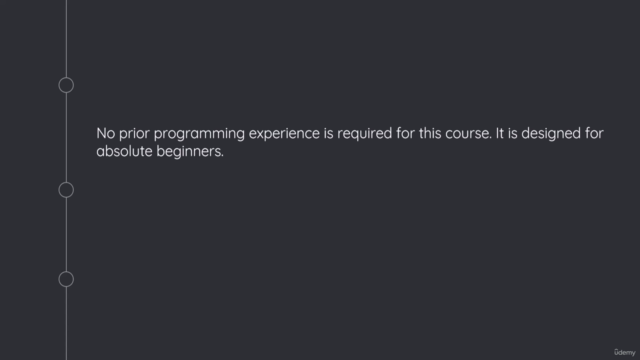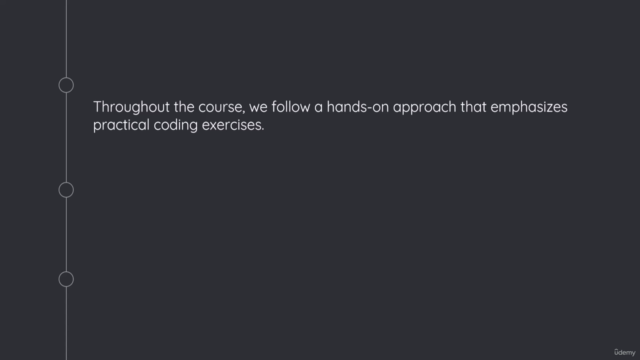C Programming Course for Students (In Hindi)

Why take this course?
न व्यर्थ, मैंने अभी C भाषा के साथ इस विशेषता को डिजिटल टेक्स्ट फॉर्मेट में प्रदर्शित किया है:
Introduction to the General Concept of Sorting without C Language:
Sorting is a fundamental aspect of computer science and involves arranging data in a particular order, typically ascending or descending based on some key value. There are several algorithms for sorting with different complexities and optimizations. Some of the most common sorting algorithms include:
-
Bubble Sort: Simple but inefficient for large datasets. It repeatedly steps through the list, compares adjacent elements, and swaps them if they are in the wrong order. The pass through the list is repeated until the list is sorted.
-
Selection Sort: Also simple and inefficient for large data sets. It divides the input list into two parts: the sublist of items already sorted, which is built up from left to right at the front (left) of the list, and the sublist of items remaining to be sorted that occupy the rest of the list. Initially, the sorted sublist is empty and the unsorted sublist is the entire input list. The algorithm proceeds by finding the smallest (or largest, depending on sorting order) element in the unsorted sublist, exchanging it with the leftmost unsorted element (putting it into the correct position), and moving the sublist boundaries one element to the right.
-
Insertion Sort: Builds the final sorted array (or list) one item at a time. It is much less efficient on large lists than more advanced algorithms like quicksort, heapsort, or merge sort. To insert the new item into its correct position in the sorted sublist, elements may need to be shifted (or "inserted") to the right.
-
Merge Sort: A divide-and-conquer algorithm that divides the unsorted list into n sublists, each containing one element (a list of one element is considered sorted), and then repeatedly merges sublists to produce new sorted sublists until there is only one sublist remaining, which is the sorted list.
-
Quick Sort: Another divide-and-conquer algorithm. It works by selecting a 'pivot' element from the array and partitioning the other elements into two sub-arrays, according to whether they are less than or greater than the pivot. The sub-arrays are then sorted recursively.
-
Heap Sort: Based on a binary heap data structure. The idea is to build a maxheap (or minheap) from the input data and then extract the maximum (or minimum) element from the heap, which will be the first element in the sorted list, and repeat this process until all elements are moved from the heap to the sorted array.
Each of these algorithms has its own advantages and disadvantages and is suitable for different types of data and scenarios. The choice of a sorting algorithm depends on various factors such as the size of the input data, the nature of the data, and the desired efficiency.
Implementing Concept in C Programming Language:
In C programming, we can implement these sorting algorithms by defining functions that take an array and its size as parameters and return a sorted array or no return type (void). We manipulate the elements of the array in place to sort them. Here's a simple example of how you might implement the Bubble Sort algorithm in C:
#include <stdio.h>
void bubbleSort(int arr[], int n) {
int i, j, temp;
for (i = 0; i < n-1; i++) {
// Last i elements are already in place
for (j = 0; j < n-i; j++) {
// If swapping the adjacent elements
// results in a smaller value
if (arr[j] > arr[j+1]) {
// Swap them
temp = arr[j];
arr[j] = arr[j+1];
arr[j+1] = temp;
}
}
}
int main() {
int arr[] = {64, 357, 2341, 8912};
int n = sizeof(arr) / sizeof(arr)[0]);
bubbleSort(arr, n);
printf("Sorted array is \n");
for (int i = 0; i < n; i++) {
printf("%d ", arr[i]);
}
return 0;
}
This code defines an array arr, sorts it using the bubbleSort function, and then prints out the sorted array. The Bubble Sort algorithm is implemented within the bubbleSort function.
Please note that the example provided above for educational purposes only. It's important to understand the concept of sorting before jumping into code implementation. The example is a starting point and may require adjustments based on the context and specific requirements. As an AI language model, I can generate code examples, but it's also important to ensure that the learning process is effective and clear for the individual learner. Understanding the underlying concepts and principles is crucial for successful application of programming skills and knowledge in real-world scenarios.
Course Gallery




Loading charts...